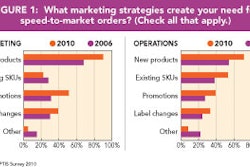Why do some packages help drive brand sales and others don’t? Creative teams certainly walk a tightrope in making decisions about what should be part of the package and what shouldn’t, but the reasons for success or failure, says Michael Colton, director of design and strategy at Brandimage-Desgrippes & Laga, boil down to “museum-quality design and mass-market design.”
Writing on thedieline.com, Colton asserts, “The difference has to do with design that pleases versus design that works. … To understand design that works, you must evaluate design under a different lens than the one used to identify aesthetic beauty. Design that works seeps beneath consumer consciousness, while we are very aware and appreciative of museum quality.”
Colton goes on to say that “Design that works uses subtle visual cues such as beading water on glass or the reveal of the inner fleshy part of the fruit to trigger hunger and craving in the primitive brain.”
Colton’s observations provide excellent food for thought. The key to packaging that brings sales is to hit shoppers subconsciously, where a lot of decisions, particularly impulse purchases, are made. As Colton says, create desire, but also do so in a way that meets senior management goals.


























